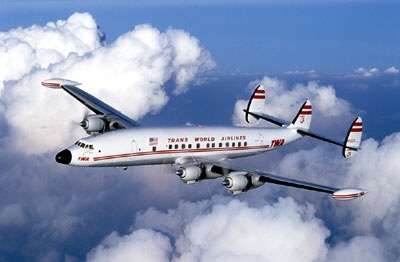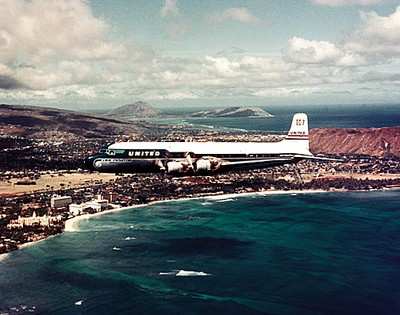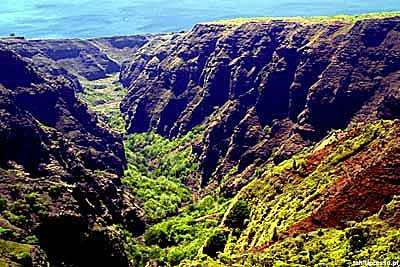Wreckage Found In Grand Canyon Could Be From 1956 Midair
It was June 30, 1956 when a TWA Super Constellation and a United
Airlines DC-7 collided in the skies over the Grand Canyon. All of
the 128 people on board the two aircraft were killed. It was a
tragedy of international proportions and it even helped spur the
creation of the FAA.

But for Navajo Indians who lived in and around the Grand Canyon,
it was a single moment in time, unremarkable to many, even though
that moment is marked in the canyon even today.
Kee Acothley, who's now 72, remembers his stepfather's stories
about the crash. Acothley told the Arizona Republic that he saw
some of the debris plunge into the canyon moments after the two
airliners collided.
"He told me it (the smoke) looked like black yarn thrown into
the canyon," Acothley said of the thin line of smoke his stepfather
told him about.
It was the beginning of an unusually frantic time for the Navajo
people of Northern Arizona. There were spotter planes suddenly
flying all over the huge canyon. There were rescue and recovery
vehicles speeding along their roads, most of which had not yet been
paved.

"We pointed to... the edge, and told them to travel toward the
jagged rocks to the west, and they'll find where the rivers meet,"
78-year old Dorothy Reid remembered in an interview with the
Republic. Hundreds of official vehicles streamed past her sheep
camp in the days following the midair. Before she left for
Albuquerque for treatment of tuberculosis in 1961, Navajos talked
about the airplane debris left behind, she said.
"Few Navajo families living out there in the 1950s were educated
and (flying cars) did not interest them," Reid told the Republic.
"I don't know why the debris is there, and we never asked."
But the point is that the debris may very well still be in the
canyon and along its rim. Among the items in question are things
like a crumpled tire, rotting away almost unseen beneath the purple
sage of the canyon's northern rim. Not far away, bits of a seat
belt clasp and pieces of fuselage lie on the ground, as if markers
in a graveyard.
Reporters at the Republic say at least two Navajo men told them
they went to the crash site to help interpret during the cleanup
effort. While a lot of the debris was eventually carted off, some
of it remains in the canyon -- even to this day.
At least, that's what a lot of Navajos say. They tell stories
about tatters of clothing blowing in the wind and point to
half-buried tires and hunks of metal. Some of them believe the
leftover debris is an appropriate marker for those who lost their
lives 48 years ago. But other Navajos say the debris isn't part of
the permanent landscape and they want it completely removed.
The Republic reports no one is actually sure if the debris
reported by Navajos actually came from that historical aerial
collision. And, frankly, much of the rest of the world is too busy
these days to care much. Take NTSB spokesman Ted Lopatkiewicz, for
instance. When the Republic's reporters asked him about the
wreckage, he was surprised that debris was ever on the rim of the
Grand Canyon.
"We're not in the position to look into this at this point," he
said. "With the aviation wreckage, I don't know if the airlines
have any responsibility to clean it up."

But Don Yellowman, identified by the Republic as a grazing
official for the Gap/Bodaway community, begs to differ. Though the
43-year-old has never visited the debris, he called for a thorough
cleanup.
"If the debris is not part of the landscape around the Grand
Canyon, natives would say, 'that's the impact of the modern age,'
it's trash, and it doesn't belong in the picture of the area," he
said. "I say to federal officials or the airlines... clean it."
 ANN's Daily Aero-Linx (04.16.24)
ANN's Daily Aero-Linx (04.16.24) Aero-News: Quote of the Day (04.16.24)
Aero-News: Quote of the Day (04.16.24) Airborne 04.10.24: SnF24!, A50 Heritage Reveal, HeliCycle!, Montaer MC-01
Airborne 04.10.24: SnF24!, A50 Heritage Reveal, HeliCycle!, Montaer MC-01 Airborne 04.12.24: SnF24!, G100UL Is Here, Holy Micro, Plane Tags
Airborne 04.12.24: SnF24!, G100UL Is Here, Holy Micro, Plane Tags Airborne-Flight Training 04.17.24: Feds Need Controllers, Spirit Delay, Redbird
Airborne-Flight Training 04.17.24: Feds Need Controllers, Spirit Delay, Redbird





